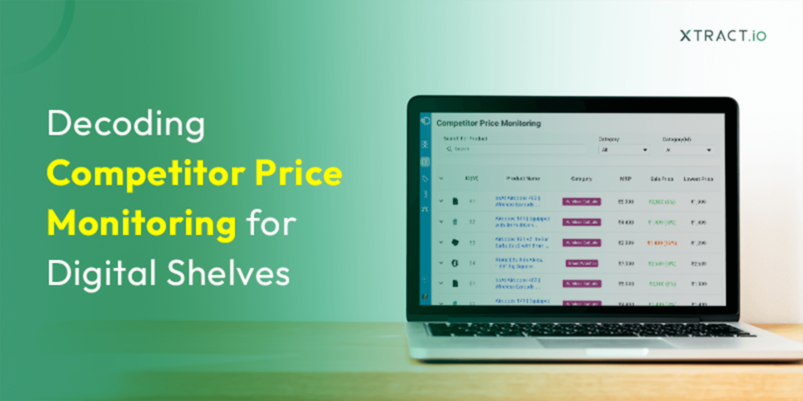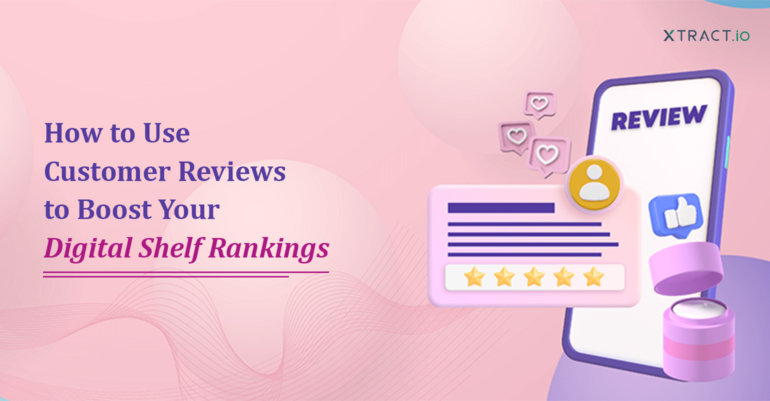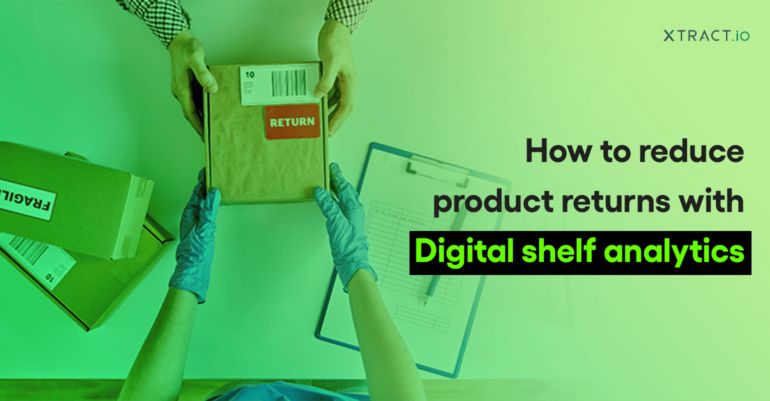In the competitive world of e-commerce, competitor price monitoring isn’t just about undercutting prices. It’s about uncovering the rationale behind their pricing decisions, understanding how consumers perceive value, and strategically positioning your offerings. Competitor price monitoring isn’t a simple price-check exercise; it’s about deciphering the story behind the data.
Decoding the nuances of the competitor’s pricing can be a game-changer for striving businesses. By understanding and analyzing the pricing strategies, your ecommerce business can make informed decisions to optimize for best pricing, enhance product positioning, and improve overall market strategy. In this blog, we will delve into the intricacies of competitor price monitoring, from defining specific objectives to implementing pricing insights for success.
Understanding competitor price monitoring
Competitor price monitoring involves systematically tracking and analyzing competitors’ pricing strategies and actions over a while. Utilizing sophisticated digital shelf analytics tools, businesses can monitor their competitors’ pricing and discern patterns in their pricing changes.
Competitor price monitoring goes beyond simply tracking prices.
This involves considering seasonal fluctuations, product launches, or geopolitical events that might influence pricing decisions. It’s not just about knowing what price your competitor sells a product for, but why and when they change that price.
One of the critical aspects of understanding competitor price monitoring is the identification of relevant competitors. This involves identifying direct and indirect competitors who offer similar products and helps you understand the broader competitive landscape. It is essential to consider both online and offline competitors, new entrants, and established players in the market.
Defining specific objectives for competitive price monitoring
The most effective way to decode competitor price monitoring is to define specific objectives aligned with your overall business strategy. These objectives include gaining insights into competitors’ pricing strategies, identifying opportunities for price optimization, and understanding the impact of competitive pricing on market share and profitability.
For instance, if the objective is to understand the impact of competitive pricing on market share, businesses may need to track prices, sales volumes, and customer acquisition metrics. Defining specific objectives allows your business to tailor monitoring efforts to gather the most relevant and actionable insights.
You can track their progress and adjust the monitoring strategy by setting key performance indicators (KPIs) related to pricing insights and competitive positioning. This iterative approach ensures that competitor price monitoring remains aligned with business goals and contributes to overall success.
Identifying and prioritizing competitors
Regarding competitor price monitoring, not all competitors are created equal. Some competitors may significantly impact pricing dynamics and market trends, while others may have a more limited influence. Therefore, you need to identify and prioritize competitors based on their relevance and impact on the market.
When identifying competitors for monitoring, your business should consider market share, pricing strategies, product offerings, and geographic presence. This comprehensive assessment allows your business to prioritize competitors most relevant to their market positioning and strategic objectives. Companies can allocate their resources effectively and gain deeper insights into competitive pricing dynamics by focusing on the most impactful competitors.
Prioritizing competitors also involves understanding the nuances of their pricing strategies. Some competitors may compete primarily on price, while others may differentiate through value-added services, product features, or brand positioning. By understanding the diverse pricing strategies employed by different competitors, you can easily tailor your monitoring efforts to gain exclusive insights into the competitive landscape.
Implementing competitor pricing insight for success
Leveraging insights is a crucial step to drive strategic decisions. Once you have gathered and analyzed pricing insights, the next step is to implement them effectively to optimize pricing strategies and market positioning. One way to implement competitor pricing insights is through dynamic pricing strategies. This allows you to adapt swiftly to market changes and maintain competitiveness while maintaining profitability and market share.
Furthermore, competitor price tracking can inform product positioning and value proposition strategies. To better resonate with target customers, you must understand how competitors price their products and how pricing changes affect consumer behavior. This customer-centric approach ensures that pricing decisions are aligned with consumer preferences and market dynamics.
Bottom line
Decoding competitor price monitoring requires a deep understanding of market dynamics, competitor behavior, and consumer preferences. You can effectively gain a competitive advantage in the digital marketplace by defining specific objectives, identifying and prioritizing competitors, and implementing pricing insights effectively.
Competitor price monitoring is about tracking prices and leveraging insights to make informed pricing decisions that drive success. In the fast-paced and dynamic digital marketplace, competitor price monitoring is a powerful tool that empowers businesses to decode pricing dynamics and unlock full business potential. DigiSense360 is a digital shelf analytics platform that excels in real-time competitor price tracking and analysis, providing companies with actionable insights to optimize pricing strategies.
With its user-friendly interface and advanced algorithms, DigiSense360 empowers ecommerce businesses like yours to stay ahead by effectively identifying market trends, benchmarking prices, and implementing dynamic pricing strategies. Request a demo with us to start your competitor price monitoring journey.







